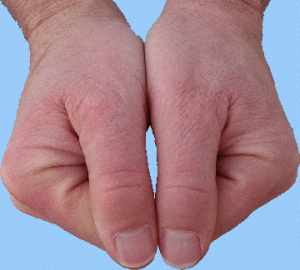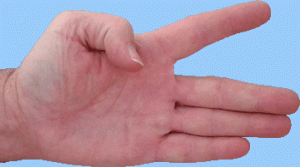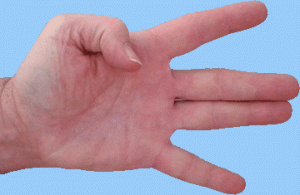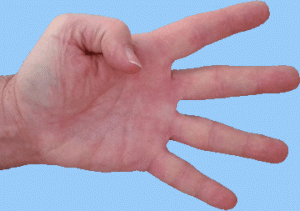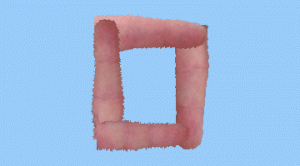Introduction to the Dao
(as it relates to Sentence 2)
The primary working principle in ancient China that was analogous to modern science was the Dao. The Dao represents a 5 stage cycle, which everything in nature was recognized to follow. It is therefore no coincidence that Sunzi begins by identifying 5 ‘things’, 5 distinctions to use for analysis, and not some other number.
The Dao is the name given to a model of evolution in nature. The Dao represents an awareness by the ancient Chinese that everything in natures evolves, everything changes, and that all change follows a similar pattern. The Dao is a 5 stage model, and it is a cyclic model.
Since everything follows the same pattern, any analogy can serve to provide insight into the pattern. Let us consider the evolution of human awareness of nature, from the initial stage of our species of similarity to the other animals to our current evolved understanding, which our species had fairly well achieved by the time of the writing of the DaoDeJing, the book by Laozi that first began to crystallize the Chinese notion of the Dao.
For the evolution of human awareness, there is no simpler model than geometry, as it is taught in public school, to help us to recognize that these are indeed all of the stages that humans have become aware of.
To understand how our ancestors recognized and represented awareness of these relationships in nature, let us examine the human body. The easiest part of the body to observe these relationships is the human hands. There are many ways to use relationships that we can observe within the hands to represent relationships of the Dao. We will use one that is not the best for a deep understanding of the Dao, but which is quite simple and demonstrates the usage in sentence 2 of this book.
The model begins with awareness of unity. When something seems unified, then it appears as 1, with no awareness of differences, completely without distinction. Our ancestors had evolved to this stage of awareness when our species was not much removed from the other animals.
As human awareness evolved to become more complex, we learned to look more deeply into what we had heretofore recognized as unity. When our species did so with the hands, we became aware that unity does not mean that everything is exactly the same, but that there is also difference; we became aware of distinction. The awareness of distinction where there was before only awareness of unity is called subdivision. In the model of the Dao, subdivision is always subdivision into 2. When there is subdivision into 2, the 2 are always known as Yang and Yin. There are 2 levels of subdivision into 2. 2 x 2 = 4 levels of subdivision.
Therefore, in addition to the unity of the Dao, there is awareness of 4 forms of distinction. 1 + 4 = 5 forms of distinction. We can consider the Dao in 2 ways:
We can consider the Dao in terms of its distinctions. If we begin with the unity of the Dao, the Dao represents 1. To that, we can add the awareness of 4 distinctions. Together, these make 5 distinctions within the Dao. This is the way that Sunzi refers to it, and how we will discuss it.
We could also consider in terms of the stages of the Dao. We begin with the unity of the Dao, which represents 1. There are 4 subdivisions of the unity within the Dao. The 1st subdivision adds awareness of 2 distinctions. Each of 2 more subdivisions adds 1 distinction. Therefore, 3 stages add these 4 distinctions. There is then a final subdivision, upon which the cycle ends, again with the unity of the Dao. 1 + 3 + 1 = 5. Awareness of the 5 distinctions enables awareness of the 5 stages in the cycle of the Dao. This is not the way that Sunzi refers to it, and so we will discuss only briefly it.
Let us now examine the Dao, and the 4 subdivisions of the Dao. Let us follow a simple evolution in our awareness of relationships that exist within the human hands.
First, the hands are closed and are located together. If we look at this simply, and if this photograph is our only guide to understanding the hands, then we can be aware of no distinctions within the hands.
At this time, there is no use for geometry, since geometry is about awareness of relationships, and within unity there is nothing to relate.
Next, we can come to be aware of subdivision. We become aware that the hands can be separated, into 2 hands, and that the 2 hands are symmetrical. Let us for now examine only 1 hand, since the other hand follows the same pattern. We can become aware of 4 distinctions within the hand.
When we look at 1 hand, we are seeing a subdivision of the unified fists from before, a subdivision of the unity of the Dao. Our first look at a single hand observes it as a whole. There is only 1 grouping of fingers. As we begin to look at the hand more deeply, we will discover increasing levels of subdivision. We will observe this increasing complexity in stages, just as our ancient ancestors became aware of relationships that exist in nature in stages.
The thumb will be used separately from the rest of the hand, since the thumb is used only to mark off distinctions that we become aware of and to indicate relationships between distinctions. Here, the thumb is bent to keep it out of the way. The rest of the hand, the other fingers, are used to identify the 4 distinctions.
Here, the rest of the hand is seen as a unified whole, since there is no clear distinction within it. The hand is seen as 1. When there is 1, the 1 is known as Yang. (It is important to recall that Yang represents unity, but only given the fact that we have already created subdivision, since this hand represents a subdivision of the unity that is the Dao.)
Symbols were developed in nature to represent each distinction. Yang is often also known as the heavens (天, tiān).
In terms of geometry, Yang can be symbolized as the point. The geometric point is something that cannot be subdivided. The thumb can be placed on the fingers, but the thumb cannot be moved, since there is no other point to move it to.
In the next stage, we can begin to see subdivision within the hand. 1 finger, the 1st finger, moves away from the rest of the hand, such that it can be seen to be distinct. Now, the hand is subdivided into 2. When there are 2, the 2 are known as Yang and Yin.
The awareness of the subdivision of all of nature into 2, Yang and Yin, is extremely profound. Yet, at the most fundamental level, their definitions are quite simple. Yang is that of which there was awareness 1st, and Yin is that of which there was awareness 2nd. This definition perhaps sounds quite simplistic, but in another part of this blog I will show that this simple definition can be applied to all human awareness of relationships that exist in space and time, as well as to awareness of subdivisions of space, such as directions, and subdivisions of time, such as the day, month, and year.
The symbol that is used to represent Yin is earth (地, dì). This is a simple analogy, as the hand is oriented vertically, such that the index finger is closer to the heavens and the rest of the fingers are closer to the earth.
The fingers of the hand have subdivided into the index finger and the rest of the hand, into Yang and Yin. The hand is oriented vertically. The index finger is above (Yang to) the rest. The index finger represents 1 (Yang) finger, and cannot be further subdivided. The rest of the hand is further divisible (Yin). Yang gives rise to Yin, awareness of the heavens gives rise to awareness of the earth.
In terms of geometry, Yin can be symbolized as the ray segment. As the index finger moves away from the other fingers, the thumb can mark this off by moving from the rest of the hand to the index finger. This motion from one point to another, in 1 direction, is called a ray in geometry. Since this movement is finite, and not infinite, we shall refer to it as a segment.
In the next stage, we can see more subdivision within the hand. A 2nd finger, the last finger, moves away from the rest of the hand, such that it can be seen to be distinct. Now, the hand is subdivided into 3. When there are 3, the 3rd is known as Yang within Yin.
The fingers of the hand have subdivided into the index finger, the little finger, and the rest of the hand. Just as Yang subdivided 1st, Yin subdivides 2nd.
There are now 3 parts of the hand. There is 1 (Yang) that is Yang, and there are 2 (Yin) that are Yin. Yin is subdivided, into Yang and Yin. There is Yang within Yin and there is Yin within Yin. Yin within Yin is simply called Yin. The new part is above (Yang to) the Yin finger. Yin gives rise to Yang within Yin.
The symbol that is used to represent Yang within Yin is mankind (人, rén). The trilogy of Yang, Yin, and Yang within Yin are often known as the heavens, earth, and mankind. Awareness of the earth gives rise to awareness of mankind. Mankind is associated with the earth, and not with the heavens. Mankind lives with the earth, above (Yang to) it.
The 1st level of subdivision of the Dao gave rise to Yang and Yin. This is now a 2nd level of subdivision of the unity of the Dao. Just as Yang gave rise to Yin, Yin now gives rise to Yang.
In terms of geometry, Yang within Yin can be symbolized as the line segment. As the little finger moves away from the other fingers, the thumb can mark this off by moving from the rest of the hand upward (Yang) to the index (Yang) finger or downward (Yin) to the little (Yin) finger. This motion from one point to another, in 2 directions, is called a line in geometry. Since this movement is finite, and not infinite, we shall refer to it as a segment.
In the next stage, we can see the last subdivision within the hand. The finger in the middle subdivides, such that where there was awareness of 1 there is now awareness of 2. Now, the hand is subdivided into 4. When there are 4, the 4th is known as Yin within Yang.
Just as Yin subdivided 2nd, Yang subdivides 3rd. Yang within Yin gives rise to Yin within Yang.
Now that all fingers of the hand are separate, such that subdivision of the hand is complete, we see that there are 4 fingers of the hand. We can look at the hand in 2 (Yin) different ways, outside-inside and top-bottom.
1st (Yang) was outside-inside. The outside (Yang) pair of fingers, the index and little finger, represents the 1st pair of subdivisions, into Yang and Yin. The inside (Yin) pair of fingers, the middle and ring fingers, represents the 2nd pair of subdivisions, into Yang within Yin and Yin within Yang.
We can look at the hand in a 2nd (Yin) way. There are a pair of fingers on top, the index and middle fingers, and there are a pair of fingers on the bottom, the ring and little fingers. The top pair represents Yang, and the bottom pair represents Yin. Both Yang and Yin are subdivided. The top pair is subdivided into a top and a bottom finger, Yang within Yang and Yin within Yang. The bottom pair is subdivided into a top and a bottom finger, Yang within Yin and Yin within Yin. Yang within Yang is simply called Yang, and Yin within Yin is simply called Yin.
Awareness of mankind has subdivided. We need a new analogy. Yang within Yin and Yin within Yang are often also known as fire and water (火, huǒ & 水, shuǐ). The 4 of Yang, Yin, Yang within Yin, and Yin within Yang are often known as the heavens, earth, fire, and water.
The analogy goes like this: Earth refers to the earth, where mankind resides, and symbolizes Yin. From the earth, fire moves in 1 direction only, upward; fire rises. Fire is therefore of the earth, but it is Yang, as it rises, such that fire symbolizes Yang within Yin. Fire rises to the heavens. The heavens symbolize Yang. From the heavens, water, in the form of rain, moves in a 2nd direction, downward; rain falls to the earth. Water is therefore of the heavens, but it is Yin, as it falls, such that water symbolizes Yin within Yang.
In terms of geometry, Yin within Yang can be symbolized as the area. The shape of the square formed by the 4 fingers clearly represents an area.
We now have the 5 distinctions of the Dao, which include the Dao, Yang, Yin, Yang within Yin, and Yin within Yang.
However, this only constitutes 4 stages, since awareness of Yang and Yin arose together in the 1st subdivision of the Dao. We could also examine the 5th stage, which again symbolizes the stage of unity of the Dao. Sunzi does not concern himself with this, so we will mention it only briefly.
Since the 1st stage unity of the Dao, the 2 hands have been viewed in a subdivided form.
In the 5th stage, the Dao is again unified. This time, however, our awareness of the unity has evolved to the awareness of a more complex unity. Both hands are observed together, as a unity. The thumbs are now used in the same (Yang) way as the other fingers, as they are no longer subdivided in function from the other fingers.
In terms of geometry, the 5th stage is symbolized as the volume. The shape of the sphere formed by the 5 fingers of the 2 hands clearly represents a volume.
The 5th stage is composed of 5 parts that make up the unity of the whole. These 5 parts are often referred to by such names as the ‘5 Elements’. The 5 Elements are known as Wood (木, mù), Fire (火, huǒ), Earth (土, tǔ), Metal (金, jīn), and Water (水, shuǐ). The order of these elements is presented in different ways for various reasons, but the order here is the order as used in Chinese medicine. Note that the element earth (土) refers to the ground, and is different from the earth (地) as opposed to the heavens.
The 5 Elements symbolize all 5 stages, as well as the 5th stage. In terms of geometry, the earth (ground) on which we stand is analogous to a point. From here, fire rises, symbolizing the ray segment. To here, water falls, in the form of rain, symbolizing the line segment. Wood spreads out along the area formed by the surface of the earth. Metal lies within the earth, such that metal enables awareness that the earth occupies a volume.
The Dao is a model of nature that describes a 5 stage cycle of evolution. The 1ststage begins with the unity of the Dao. The 5th stage of the cycle ends back at the beginning, with the unity of the Dao. The unity at the end of the cycle is more evolved than the unity at the beginning of the cycle. Such is the nature of evolution. Such is the nature of nature.
